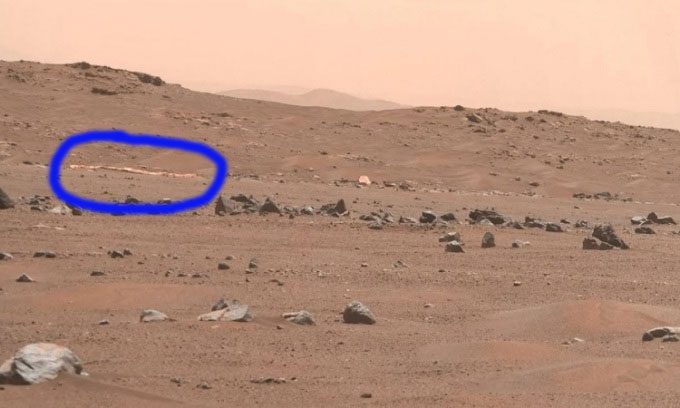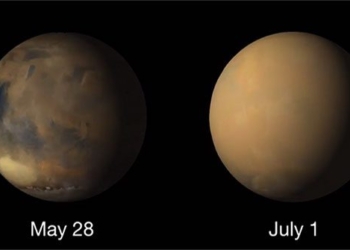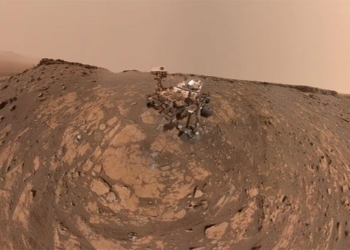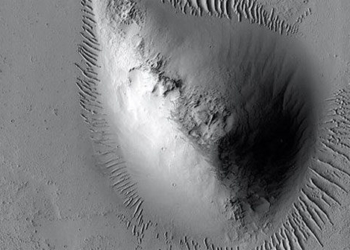More than 13 months after Perseverance landed on Mars (February 18, 2021), the rover’s camera detected some parts of the Mars 2020 landing system.
The MastCam-Z camera of Perseverance captured images of the parachute and the rear shield from a distance in the southern area of the rover’s current location. The photo was taken on April 6, 2022.

The parachute (the thin yellow line in the upper left corner of the frame) of Perseverance in a distant shot. (Photo: NASA)
Typically, at the beginning of a mission, the rover would drive to the side to photograph the remaining parts of the landing system. However, Perseverance had to navigate around some rugged terrain to reach a broad area in the Jezero crater that scientists wanted to study, known as South Séítah. This area is located near where the parachute fell. The parachute was discarded during the landing sequence so that the skycrane jetpack could lower the rover to the ground on its wheels.
Previously, the HiRISE camera of the Mars Reconnaissance Orbiter also captured images of the parachute and protective shield, along with the rover’s location and other objects from the landing process. The photograph was taken a day after Perseverance landed. The rover is situated at the center of the impact zone created by the skycrane. After that, the device flew away and crashed to the ground at a safe distance, leaving a V-shaped trace.
Currently, Perseverance is moving towards its next target in the second science campaign of the mission, which resembles a large river delta. The rover is traveling faster than any previous vehicle, even though it is only achieving speeds of less than 160 meters per hour. Perseverance is using its autonomous navigation capability to scout the terrain and move relatively quickly by traversing flat ground for several hours each day.
Perseverance has broken the record for the distance traveled in a single day by previous rovers, covering 319.8 meters on the 351st day on Mars. Curiosity managed to travel over 100 meters on some journeys but never exceeded 200 meters due to operating on more rocky terrain. The Opportunity rover, which landed in 2004, traveled up to 228 meters in a day using solar power.

















































